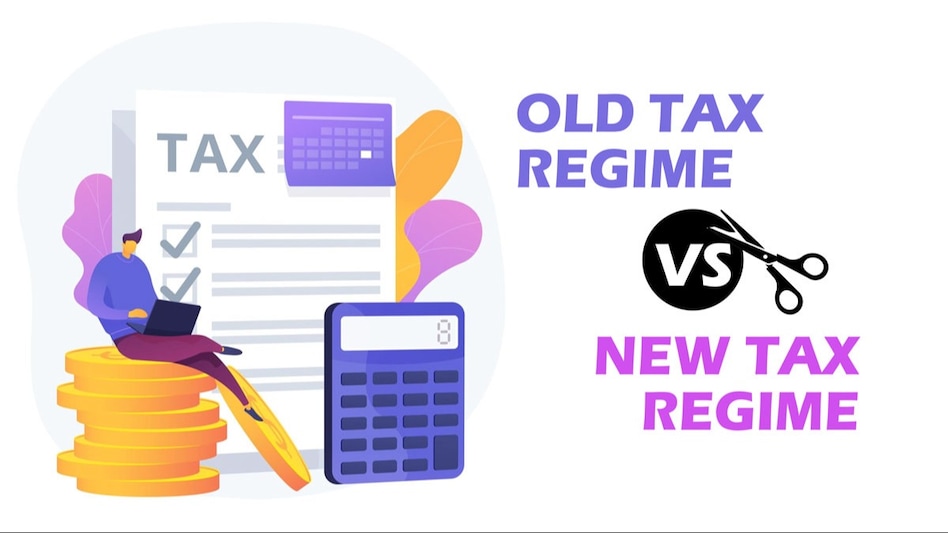 Till FY 2019-20 (ended on March 31, 2020), there was only one tax regime with four tax slabs and tax rates. The New Tax Regime was introduced in 2020.
Till FY 2019-20 (ended on March 31, 2020), there was only one tax regime with four tax slabs and tax rates. The New Tax Regime was introduced in 2020. Till FY 2019-20 (ended on March 31, 2020), there was only one tax regime with four tax slabs and tax rates. The New Tax Regime was introduced in 2020.
Till FY 2019-20 (ended on March 31, 2020), there was only one tax regime with four tax slabs and tax rates. The New Tax Regime was introduced in 2020.Income Tax 2024-25: During the Union Budget proceedings for fiscal year 2023-24, Finance Minister Nirmala Sitharaman declared that the new tax structure will be established as the default regime. This updated approach to taxation was initially implemented in 2020. The present rules stipulate that should taxpayers neglect to declare their preference with their employer, deductions shall be processed according to the New Tax Regime.
Through her discourse on Budget proposals for the financial year 2023-24, Union Finance Minister Sitharaman underscored that one of the main objectives of the new income tax system is facilitating individuals' greater autonomy over their financial management. Rather than having governmental influences dictate choices via incentives or penalties, taxpayers are being granted considerable latitude in determining allocations of their finances.
Nevertheless, taxpayers desiring to adhere to old taxation norms have been afforded flexibility by provisions within Budget 2023, permitting them to interchange between old and new regimes. The frequency at which such switches, however, is conditional on specific types of income.
Salaried Individual
A salaried individual has the flexibility to switch between the new and old tax regimes multiple times within each financial year. The new tax regime offers fewer tax deductions and exemptions compared to the old tax regime, which provides various deductions under Chapter VI A from taxable income. Section 80C is a well-known and commonly used deduction.
Income from business or profession
However, individuals with income from business or profession can only make a one-time choice. For instance, if an individual with business income switches from the old to the new regime in FY 2023, they will not be eligible to switch again. Once an individual with business income opts out of the new tax regime, they cannot opt back in for the new tax regime in the future.
How to switch while filing ITR?
The Central Board of Direct Taxes (CBDT) has recently introduced two new income tax return forms, ITR-1 (SAHAJ) and ITR-4 (SUGAM), for the Assessment Year 2024-25. ITR Form 1 now includes the option to select the tax regime. For ITR 4 (individuals with business or professional income), taxpayers will need to file form 10-IEA to opt out of the new tax regime.
Previously, individuals had to fill out Form 10-IE to choose the new tax regime. However, Form 10-IE, which allowed individuals to opt into the new tax regime, has been discontinued. This change aims to make the new tax regime the default setting, starting from the financial year 2023-24. Therefore, the new tax regime will automatically apply unless individuals take specific action to opt for the old regime.
Old Tax Regime vs New Tax Regime
The old tax regime provides several tax exemptions and deductions for individuals. Some of the frequently claimed exemptions and deductions include house rent allowance (HRA), leave travel allowance (LTA), deductions under Sections 80C, 80D, 80CCD(1b), 80CCD(2), and others.
New Tax Regime
The exemptions and deductions in the Old Regime are not available in the New one. If the taxable income (after all deductions) under the old regime is below Rs 5 lakh, then the individual doesn’t need to pay any tax. Under the New Regime, the entire income will be tax-free if the taxable income is under Rs 7 lakh.
> For income up to Rs 3 lakh, there is no tax.
> For income of more than Rs 3 lakh up to Rs 6 lakh, it is 5 per cent.
> Over Rs 6 lakh up to Rs 9 lakh, it is 10 per cent.
> Over Rs 9 lakh to Rs 12 lakh, it is 15 per cent
> Over Rs.12 lakh to Rs.15 lakh, it is 20 per cent.
> Above Rs 15 lakh, it is 30 per cent
Old Tax Regime
Income tax slabs (Rs) Income tax rates (%)
From 0 to 2,50,000 0%
From 2,50,001 to 5,00,000 5%
From 5,00,001 to 10,00,000 20%
From 10,00,001 and above 30%